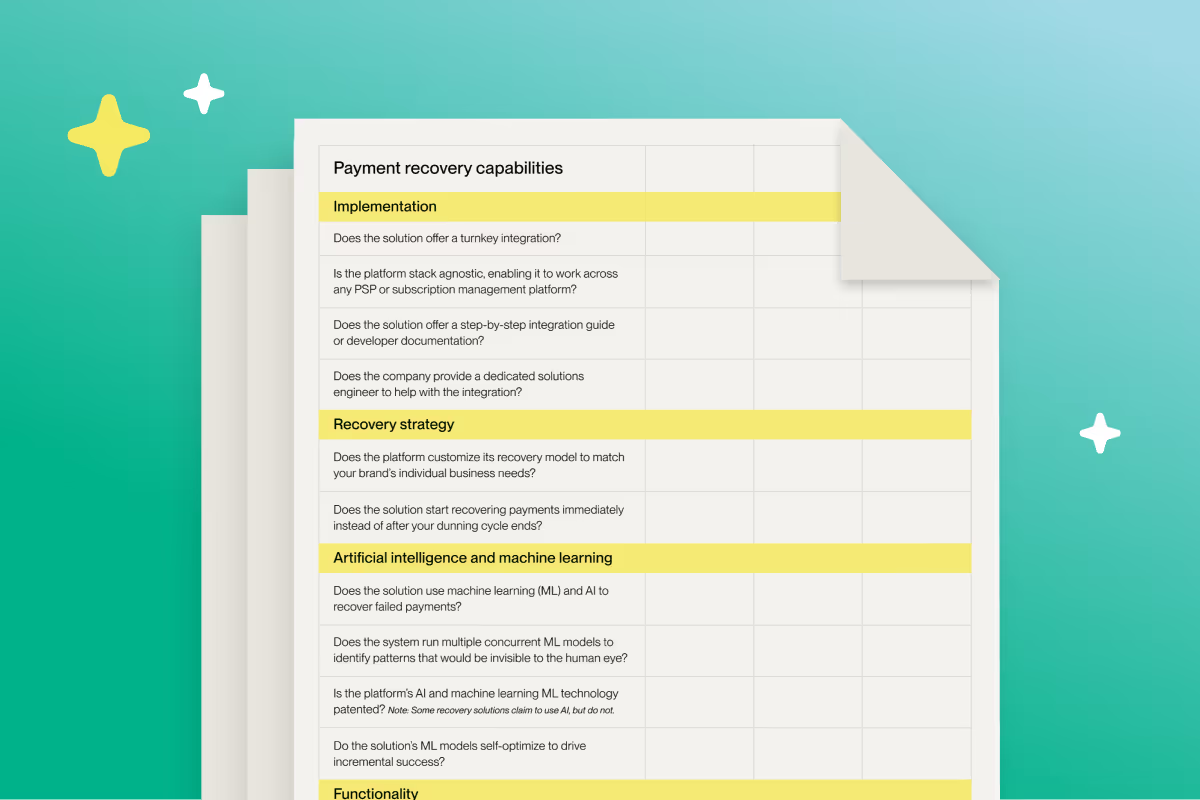
Expert analysis: 5 payments trends shaping the fitness and health industry
The health and fitness landscape is highly dynamic, with rapid market innovation, new technology adoptions, and shifting consumer expectations. Recently, we spoke with over a dozen industry leaders to gain a deeper understanding of how payments fit into their growth strategies and the challenges they're experiencing.
Below are the key insights we uncovered from the conversations, along with solutions to common payment issues plaguing health and fitness brands of all sizes. By the time you’re finished, you’ll have everything you need to improve your payments ecosystem and drive sustainable growth.
1. Tighter wallets make retention non-negotiable
Concerns about inflation and an economic downturn have led consumers to tighten their grip on their wallets. Leaders we spoke with indicated that to continue to grow in today’s uncertain market, health and fitness brands must increase their focus on retention.
While business leaders agreed that improving their overall customer experience was important, they were more concerned with solving involuntary churn, which can generate as much as 50% of overall churn.
Also known as passive churn, involuntary churn occurs when a legitimate payment transaction fails and a customer’s membership is cancelled, even though they still want to use the product or service.
Fitness leaders are keen to solve involuntary churn because consumers in the space typically stay enrolled in a membership subscription for longer periods than in other industries.
The opportunity
Failed payments are the leading cause of involuntary churn, and typically account for 10% of top-line revenue loss. Merchants seeking to grow in today’s economic climate should prioritize reducing failed payments by either launching or upleveling their retry initiatives.
2. Gyms and fitness studios are losing more than revenue to failed payments
One of our most shocking discoveries came from speaking with leaders who oversee gyms, exercise studios, and similar businesses. They shared that payment recovery typically falls to individual facility managers.
This strategy is detrimental to growth. Facility managers often lack knowledge of payments and will frequently attempt too few or too many retries. Both are bad for business.
Too few retries leaves money on the table. On the other hand, too many can drive up processing costs (most payment transactions incur a fee). To illustrate the point, one leader told us that they’ve seen facility managers retry declines as many as 45 times before giving up.
In addition to incurring processing fees, unsuccessful retries can also damage a brand’s merchant ID (similar to a credit score for businesses), increasing the likelihood that future transactions will be flagged for fraud and declined.
Outside of payment-related pitfalls, relying on managers for payment recovery can also degrade your overall customer experience. Facility managers are busy, and every minute they spend on retries is time they could be using to ensure their facility is clean, functional, and safe.
The opportunity
Relying on front-line employees to manage payment recovery is inefficient and eats into both revenue and valuable employee time. By implementing a formal recovery solution, you can recover more revenue and preserve your team’s focus on delivering an exceptional member experience. It's a win for retention, revenue, and your team.
Unlocking the secret to sustainable subscription growth in the wellness industry
3. International renewal rates are declining
Across the board, health and fitness brands with international users are experiencing low renewal rates despite strong member engagement and satisfaction. The consensus among the leaders was that resolving the issue was one of their primary concerns.
Leaders highlighted that their investigations into their declining performance indicated that involuntary churn, combined with an inefficient payment recovery process, were at the root of the problem. However, they were uncertain how to resolve the issue.
The opportunity
The reality is that payments are complex. Every country has its own financial infrastructure, preferred payment methods, and timing sensitivities. Without adapting to these nuances, even well-intentioned recovery efforts can fall short.
In this case, the leaders we spoke with relied on in-house and out-of-the-box recovery solutions that use a brute-force recovery strategy. This approach treats all declines equally and retries failed transactions a set number of times within a predetermined time period.
While this strategy is better than nothing, it struggles to capture the nuances of a global customer base. A more effective approach is to utilize machine learning and AI to analyze historical transaction data and develop customized recovery strategies for each country and geographical region.
4. In-house solutions are hitting a wall
Brands with in-house recovery solutions are struggling, and the cause isn’t what you think. Product and engineering leaders across the spectrum, from app development to membership management tools, shared that their teams are burning out.
When you step back and look at the big picture, it’s easy to see why. Payment recovery is a deeply complex problem. It requires a working knowledge of global financial systems, constantly evolving regulations, and thousands of nuanced decline codes—most of which are vague or bundled in ways that make it hard to pinpoint the root causes.
There is also the human factor: developers and analysts want to build exciting things that move the business forward. As one business leader told us, “They want to work on the cool stuff, not spend cycles deciphering payment errors.”
The opportunity
The age-old question is whether to build or buy. In some instances, it makes sense to invest resources in a set-it-and-forget-it, in-house tool. Payment recovery is not one of those instances. The problem is too complex to handle effectively without investing significant resources.
Offloading recovery to a specialist is a better solution. It enables teams to focus on innovation while addressing a mission-critical problem in the background. It’s not about giving up control—it’s about unlocking bandwidth and boosting impact.
5. The ‘insufficient funds’ playbook is broken
Health and fitness leaders we spoke with shared that recovering payments due to insufficient funds has become more difficult in recent years.
This isn’t a surprise. Most merchants are still using the same playbook they were using five years ago. They are retrying transactions on pay days, hoping members’ bank accounts will be flush.
While this strategy was effective in the past, it’s no longer so. Thanks to the gig economy and paycheck advancement solutions like Chime MyPay, a significant percentage of membership subscribers aren’t paid on a regular cadence, making it impossible to standardize a solution.
The opportunity
The economy, financial regulations, and consumer behavior will continue to evolve over time, necessitating new recovery strategies. One solution that enables you to unlock a scalable solution is to utilize an AI and machine-learning-powered recovery tool that automatically captures changes in economic and consumer behavior, and then self-optimizes. These solutions have been shown to be more effective than in-house and out-of-the-box tools, while also requiring fewer resources to operate.
Final thoughts
With so much change on the horizon, brands in the health and fitness space have a unique opportunity to rethink their approach to payment recovery. By implementing formal processes and partnering with experts who leverage machine learning and AI, brands can transform a long-overlooked area into a powerful growth engine, unlocking sustainable, scalable revenue in the process.









